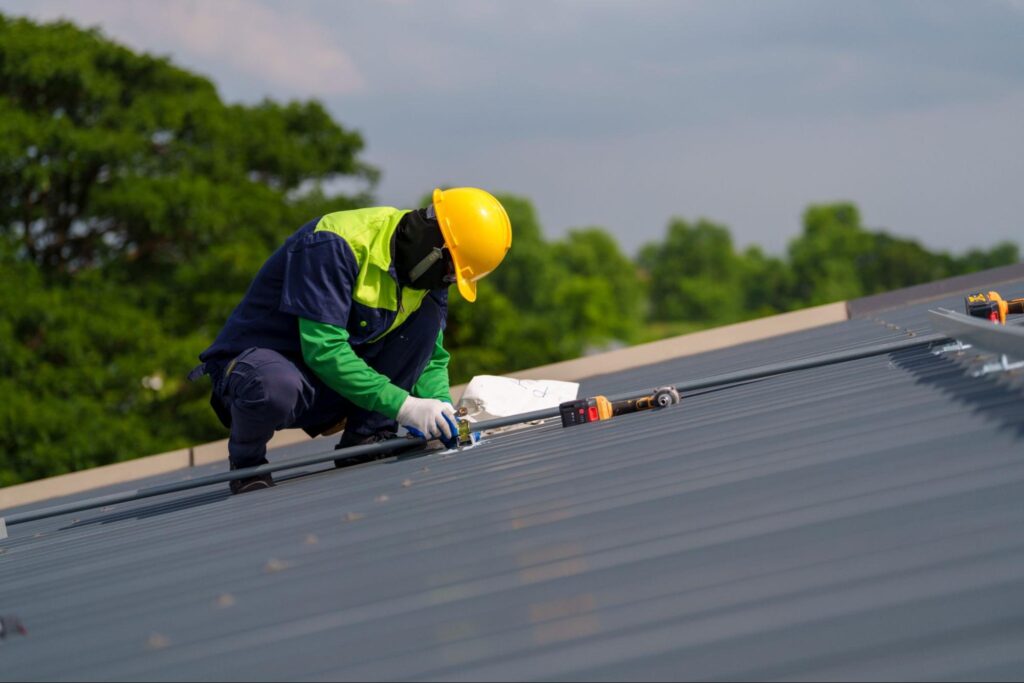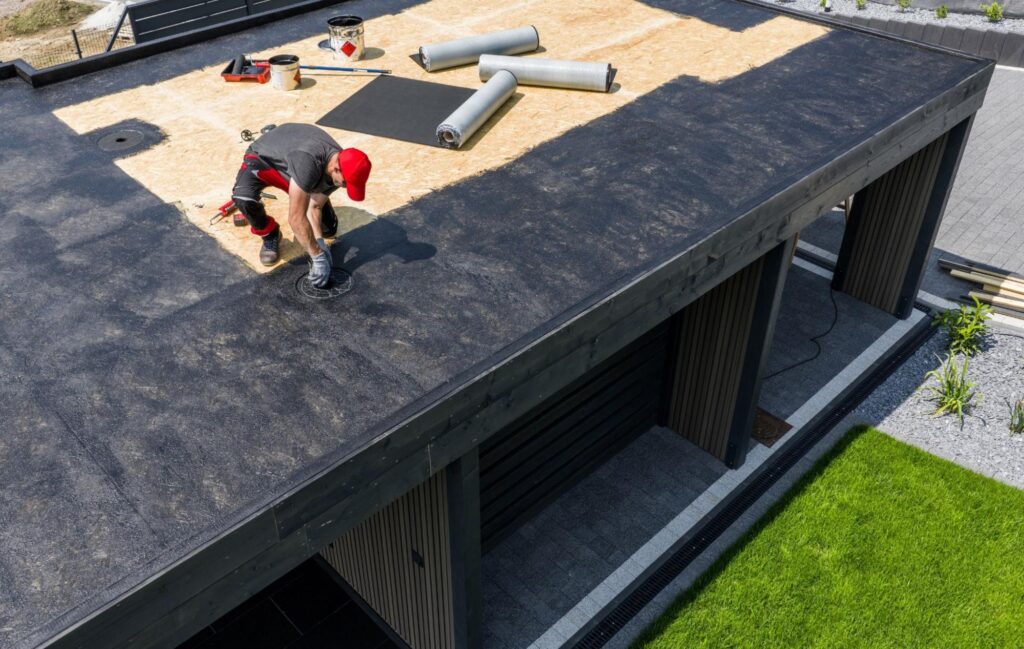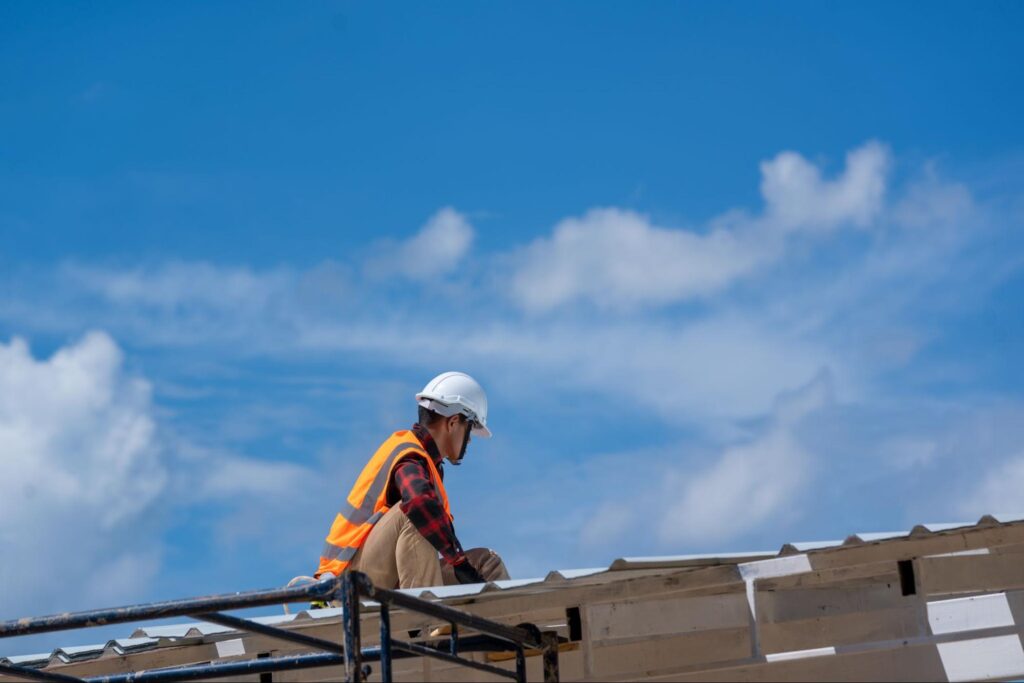Choosing the Right Commercial Roofing System: Your Ultimate Guide to Materials and Methods

Selecting the ideal commercial roofing system can slash your building’s energy expenses by up to 30% and provide robust protection for decades. This guide dives deep into the primary roofing systems—single-ply, asphalt-based, metal, and specialized options. You’ll get a clear comparison of materials, weigh factors like budget, climate, and upkeep, understand the return on investment, learn how local regulations shape your decision, prepare smart questions for your contractors, and discover the best ways to keep your roof in top shape. Whether you’re looking into commercial roofing installation in the city of Santa Barbara or anywhere else in Santa Barbara County, this comprehensive overview is packed with practical advice and connects you with the trusted expertise of seasoned commercial roofing professionals.
What Are the Main Types of Commercial Roofing Systems?
Commercial roofing systems are engineered assemblies designed to shield your building’s interior and significantly impact energy efficiency, longevity, and maintenance needs. Grasping the construction and benefits of each system is the first step toward making a choice that’s perfect for you.
What Is Single-Ply Roofing and Which Materials Are Included?
Single-ply roofing involves flexible membrane sheets, installed in one or two layers, that deliver exceptional waterproofing and reflectivity. These membranes boost energy efficiency by bouncing back solar radiation, which means less heat absorption and lower cooling costs.
- Thermoplastic Polyolefin (TPO) membranes are heat-welded to create seamless joints, enhancing wind uplift resistance and achieving high reflectivity.
- Polyvinyl Chloride (PVC) offers superior resistance to chemicals, ideal for areas around rooftop equipment, and maintains its shape reliably.
- Ethylene Propylene Diene Monomer (EPDM) is a tough synthetic rubber that stands up to UV and ozone exposure, providing dependable performance at a great value.
Each single-ply option strikes a balance between ease of installation, long-term energy savings, and minimal upkeep, making them a go-to choice for low-slope commercial buildings.
How Do Asphaltic Roofing Systems Compare in Commercial Applications?
Asphaltic roofing systems utilize bitumen and reinforcing fabrics to create layered assemblies that combine weather resilience with simple installation. Modified bitumen uses polymer-modified asphalt sheets, applied with torches or cold adhesives, to form watertight seals. Built-Up Roofing (BUR) involves alternating layers of asphalt and reinforcing felts, topped with gravel or reflective coatings for UV defense. These systems rely on redundancy—multiple waterproof layers—to ensure dependable performance and straightforward repair processes.
What Are the Benefits of Metal Roofing for Commercial Buildings?
Metal roofing offers enduring protection with steel or aluminum panels that interlock to effectively shed water and resist uplift. High solar reflectance and emissivity help keep rooftop temperatures down, reducing the strain on your HVAC system. Metal panels also boast an impressive lifespan, often exceeding 40 years, while demanding very little maintenance and supporting eco-friendly practices through their recyclability.
Which Specialized Commercial Roofing Options Should You Consider?
Specialized commercial roofing options include:
- Roof Coatings: These liquid-applied membranes revitalize existing roofs by creating seamless protective barriers that stop leaks and extend the roof’s life.
- Green Roofs: Living vegetative systems absorb stormwater, insulate buildings, and help combat the urban heat island effect through natural cooling.
- Spray Polyurethane Foam (SPF): This seamless insulation is created by spraying reactive chemicals that expand to fill every nook and cranny, providing continuous thermal resistance and waterproofing.
These advanced solutions are designed to meet specific performance goals, whether it’s restoration, sustainability, or high-performance insulation.
How Do Commercial Roofing Materials Compare: Pros, Cons, and Key Attributes?
Comparing roofing materials based on durability, cost, energy performance, and maintenance needs helps you find the perfect match for your project requirements.
| Roofing Material | Durability (Years) | Ideal Use |
|---|---|---|
| TPO | 20–30 | Low-slope roofs needing energy efficiency |
| PVC | 25–30 | Areas exposed to chemicals or rooftop equipment zones |
| EPDM | 20–25 | Budget-conscious projects on simple roof shapes |
| Modified Bitumen | 15–20 | Moderate slopes requiring heat resistance |
| Built-Up Roofing | 20–30 | High-traffic rooftops with a proven history |
| Metal | 40–70 | Long-term investments and sustainable design |
What Are the Advantages and Disadvantages of TPO Roofing?
Thermoplastic Polyolefin (TPO) roofing offers excellent reflectivity, cutting down cooling costs by bouncing back solar heat. Its heat-welded seams create solid, continuous surfaces that resist standing water and wind uplift. However, variations in membrane thickness and the quality of seam installation can impact long-term performance, making skilled installation crucial.
How Does PVC Roofing Perform in Durability and Chemical Resistance?
PVC roofing provides excellent dimensional stability thanks to a flexible polymer matrix that resists oils, grease, and chemicals often found around HVAC units. Its smooth surface repels dirt and prevents biological growth. Key features include heat-welded seams and reinforced scrim layers that boost tear resistance. While the initial cost is higher than standard single-ply options, it’s offset by reduced maintenance and a longer service life.
Why Choose EPDM Roofing for Cost-Effective Commercial Roofs?

EPDM’s synthetic rubber composition offers outstanding UV and ozone resistance at a lower initial price point than other single-ply membranes. Simple ballasted or fully adhered installations reduce labor time. Although less reflective than TPO or PVC, EPDM membranes can be coated with reflective finishes to enhance energy performance and extend their lifespan.
What Are the Installation and Weather Resistance Features of Modified Bitumen?
Modified bitumen blends asphalt with polymer modifiers in reinforced sheets that are applied using torches or cold adhesives. Its multi-layer design, featuring flood coats and aggregate surfacing, protects against UV damage and standing water. Thermal stability mechanisms allow it to adapt to temperature changes without cracking.
How Does Built-Up Roofing (BUR) Provide Traditional Durability?
Built-Up Roofing involves layering bitumen and felt plies to create a robust, multi-ply system finished with gravel or reflective coatings. This redundancy builds a strong waterproof barrier. BUR’s layered adhesion design resists wear from foot traffic and mechanical damage, offering predictable maintenance schedules and straightforward repairs.
What Makes Metal Roofing a Long-Lasting Commercial Solution?
Metal roofing utilizes interlocking panels made from galvanized steel or aluminum that efficiently shed water and resist wind uplift through hidden fasteners. High solar reflectance and emissivity coatings minimize heat absorption. Galvanized finishes and corrosion-resistant alloys provide decades of protection with minimal upkeep, making metal an excellent choice for sustainable, long-term projects.
What Are the Key Factors to Consider When Choosing a Commercial Roofing Method?
Selecting a roofing system means carefully balancing several factors—budget, climate, building type, expected lifespan, energy goals, and maintenance commitments—to ensure the system aligns perfectly with your operational and financial objectives.
- Budget Influence: Roofing costs can range from $3 to $12 per square foot, depending on the material and complexity, significantly impacting your initial investment decisions.
- Climate Impact: Your local weather patterns will determine the need for UV resistance, effective management of standing water, or robust wind uplift protection.
- Building Type: The roof’s slope, how often it’s walked on, the weight of rooftop equipment, and structural support all guide the best system choice.
- Desired Lifespan: Your expected service life (15–70 years) will help set the durability standards for materials and warranty requirements.
- Energy Efficiency: Cool roof membranes can reflect up to 90% of solar radiation, leading to lower cooling expenses.
- Maintenance Requirements: Some systems need annual inspections and coatings, while others require very little attention.
Balancing these elements—just as Infinity Roofers recommends—ensures your roofing investment provides lasting protection and predictable operating costs.
How Much Does Commercial Roofing Cost and What Is the ROI?
Understanding the cost structure and factors driving return on investment (ROI) helps property owners see the long-term value beyond the initial price tag. Roofing systems that deliver energy savings, reduced maintenance, and extended lifespans can recoup their upfront costs within 5–10 years through lower operating expenses.
| Roofing Material | Cost Range (USD/sq ft) | ROI Driver |
|---|---|---|
| TPO | 5–9 | Energy efficiency savings |
| PVC | 6–8 | Reduced chemical degradation |
| EPDM | 4–7 | Low initial investment |
| Modified Bitumen | 3–6 | Simple repair economics |
| Built-Up Roofing | 4–8 | Proven durability |
| Metal | 7–12 | Long lifespan and reflectivity |
Maintenance and repair expenses, local energy prices, and building code incentives can further influence ROI. Energy-efficient roofs might qualify for rebates or tax credits, speeding up the payback period.
What Are the Climate Challenges for Commercial Roofs in Santa Barbara and Similar Regions?
Coastal areas expose roofs to salt spray, intense UV radiation, and moderate rainfall. Cool roof membranes—like reflective TPO or metal with high emissivity coatings—help prevent premature material breakdown and reduce heat buildup.
How Can Roofing Contractors Help Navigate Local Requirements?
Experienced contractors can provide code-compliant specifications, manage inspections, and supply all necessary warranty documentation. Partnering with a licensed commercial roofing service simplifies the permitting process and ensures your roofing system performs reliably for years to come.
What Are the Best Practices for Commercial Roof Inspections and Maintenance?
Regular inspections—ideally twice a year—should focus on the condition of seams, any membrane punctures, how well the drainage system is working, and the integrity of flashing. Document any findings and address repairs promptly to prevent water damage.
How Do Different Roofing Materials Affect Maintenance Frequency?
Single-ply membranes typically require annual checks of seams and flashings, while metal roofs may need periodic inspections of fasteners and coatings. Modified bitumen and BUR systems benefit from reflective coatings applied every 5–7 years to guard against UV damage.
How Do Roof Coatings and Restoration Methods Protect Commercial Roofs?
Liquid-applied coatings refresh waterproof barriers by filling surface imperfections and creating a new, UV-resistant membrane. Restoration methods can add years to a system’s life at a fraction of the cost of replacement, offering quick downtime reduction and conserving resources.
Ready to Roof Smart in Santa Barbara?

If you’re planning a new commercial roofing installation or thinking about upgrading your current system, don’t leave anything to guesswork. Infinity Roofers has been helping Santa Barbara businesses stay protected, energy-efficient, and on budget with roofing systems that last. From choosing the right material to managing the entire installation process, we’ve got you covered from the first nail to the final inspection. Ready to talk roofing? Let’s schedule your free consultation today!
❓ FAQ: Commercial Roofing in Santa Barbara—What Business Owners Want to Know
What’s the biggest mistake Santa Barbara businesses make when choosing a commercial roof?
One of the most common pitfalls is choosing a roofing system based solely on price without considering long-term performance in Santa Barbara’s coastal climate. Salt air, strong sun, and occasional storms can take a toll, so durability and energy efficiency should play a big role in your decision—not just upfront cost.
Can you get local rebates or incentives for installing an energy-efficient commercial roof in Santa Barbara?
Yes! Depending on your building type and the materials you choose, you may qualify for energy-efficiency rebates through California’s energy programs or local utility providers. Cool roofs and reflective systems often fall into rebate-eligible categories, so it’s worth exploring options before installation.
How can you tell if your current roof system is compatible with solar panels down the road?
That’s a smart question. If you’re thinking about solar in the future, you’ll want a roof that has a long lifespan and is structurally sound. Single-ply membranes, metal systems, and even some modified bitumen roofs can work well—but it’s best to consult with Infinity Roofers during the planning stage to ensure compatibility.
🔗 What’s Next?
Curious what happens after you’ve chosen the perfect commercial roofing system? It’s time to learn how to spot problems early—before they hit your bottom line. Check out our next article:
👉 Spotting Commercial Roof Damage: A Business Owner’s Essential Guide
